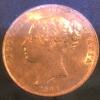Leaderboard
Popular Content
Showing content with the highest reputation on 06/16/2018 in Posts
-
4 points
-
3 points
-
I would have thought that might bring about an increase in nostalgia, not an increasing lack of it!3 points
-
It's our own fault. If we refused to use the ones that charge then they'd not bother making any more. I've never paid to get my own money out, and nor will I.2 points
-
2 points
-
I realise I have broken a cardinal rule..namely to involve and include, a forum must be a place of gathering information. So I will start again, after a nice week touring the Galloway coast and the lakes painting I return with renewed vigour to my favourite topic. But rather than ask you to see as I see after 3 years I will try gather your opinions and ask that you do just one thing: to look with great care before you respond. In 2015 I noticed the faces of "an animal" or two "behind" the surface design on coins. I pursued a line of investigation which has allowed me, after a great deal of work, to see clearly for myself what these patterns are. THey are complex and I would like to ask those of you with time and inclination to help understand rather than just see if these patterns exist and if so what is the purpose and most importantly how could they have been "imposed" on coins since at least the late 17thC and likely earlier. I initially saw it in Bronze pennies but they are the tip of the iceberg. I have a number of avenues ..theories but I need keen observers to add to and develop ideas. I am searching for a team of amature researchers. I have no desire other than to make sense of the medium "coin face" and better understanding of the coins we all love. My tools are simple a microscope, my collection, and a fine sable brush. Although I do have many years experience with pattern recognition I do not think this is a prerequisite for discovery. At the heart of this idea is the very essence of a coin which is wrapped up in the idea of the "state" its economy and religion and key to it is the sacred relationship between the monarch and christianity. I should be clear that I am in no way religious but I do not deny the importance of the relationship KING:STATE:GOD and have to go where the answers may lay rather than ignoring I must acknowledge this triad. Transmogrification is I think key to this idea: a design that if viewed in a particular way can be a number of different forms, in the case of coins the monarchs head as an example of head of state, primary servant of God in the state, protector and carer yet must show humility to succeed. Could anyone who has an interest in mystery; solving puzzles; love of coins; history; metallurgy; alchemy (chemistry); design and art please get involved. I am more than happy to accept that if we do not solve this in a year I will deem myself totally mad and stop looking after which apart from a book about my descent into madness you will hear nothing more from me on the subject. However if we solve this riddle (as I see it!) we may uncover a beautiful aspect of coining design and history that just might make it a bit more interesting for new collectors. I am not Dan Brown, there is no Da Vinci code but he may play a part, who knows. I do not have the answers but we might be able to get them together. Many thanks Larry1 point
-
1 point
-
Not good enough for Aliexpress - that one is not even designed to deceive!1 point
-
1 point
-
If you cannot go into a local shop and buy your shopping with it, it is not a coin in my opinion.1 point
-
1 point
-
A cashless society would certainly favour HMRC and others of a controlling nature who are desperate to keep tabs on us. It would mean we could never disappear for a few days or weeks living in a caravan somewhere, with a wad of cash to keep us going. Well we could do that, but we would leave a digital fingerprint with every item we bought and hence would be traceable. But I do wonder if international agreement would need to be reached before any country dares to take the ultimate plunge and go completely cashless.1 point
-
You can't argue with that. Both British and German coins offer huge scope for discussion. So too do French issues, ancients etc. The key is clearly diversity of design, which is helped immensely by hammered issues which are intrinsically different dies every time.1 point
-
Not a good analogy. The 50s saw a change from shellac 78s to vinyl. The 60s saw the first audio cassettes appear. The 70s saw 8-track, and digital mastering. The 80s saw CDs. The 90s saw the first MP3s. This century has seen the download of digital music gradually change to streaming. Yet collectors of vinyl (especially), but even audio cassettes are thriving. It probably won't be too long before CD collectors start mushrooming. Cash goes much further back than the ability to own music recordings, so if there is a transition to a cashless society it will be a great sea change as cash has existed for millennia.1 point
-
I don't remember what got me started on older coins but having them at the start of every catalogue I've ever bought probably helped. Still strong I'd say - there are still a few societies, regular shows and a local magazine, and of course the Royal Australian Mint is churning out more collector coins than ever. As annoying as the plethora of coloured $2 coins is, it probably helps spark an interest in the man on the street. There is a dedicated subforum on Coin Community too which used to be quite busy (a lot of traffic moved to the hidden sections of https://www.australian-coins.net/ around 2012 - it has been a bit quiet of late but I think it's harder to sustain continuous conversation about 108 years of Australian coinage (not including the gold) compared to many hundreds of years of British coinage).1 point
-
The possible answer is a (even a slight) understanding of the way the human brain works. We are "geared" to see patterns in everything, probably stemming from the genetic necessity for babies to recognise faces almost before anything else. This weakens as we get older but it never dies out, and so we 'see' many things by forming a pattern that has meaning out of something that is completely random. People see the face of Elvis or Jesus or whoever in some item of food they've bought, or in clouds, or anywhere really. The picture below illustrates this perfectly:1 point
-
I started because I saw a 1672 farthing for 6d in a antiques/curios shop window, and thought it would be cool to have something that old, and dated. I was 15 at the time.1 point
-
No i dont buy them Larry i just like looking at the pictures1 point
-
Yes Mike i looked at the others and would not question that one.I suppose it all goes back to if your spending a few quid you need to view them to be sure. From the picture i would not bid on the F6a ,however maybe it is1 point
-
You also have to consider die bounce if you are looking at slight translational or rotational movement. The better the surfaces, the more noticeable it becomes. In the case of the Soho restrikes, you also have to consider the unreliability of Taylor's press which frequently suffered from the collar opening leading to multiple strikes, each slightly rotated from the next. When he acquired the tub of dies from the Soho Mint sale, the collars in particular were found to be worn to the extent that they were virtually useless. Clearly this wasn't something that happened after the mint closed, so we can reasonably assume that it was an ongoing problem throughout the Soho period. Dies wear out and get replaced, but degrading collars are less likely to be noticed until they no longer close properly. A loose collar would give rise to these slight movements.1 point
-
No Bob - dnw describe the variety as such for their upcoming auction. Thought maybe they knew something I didn't - link to item Click Image to Zoom Back to Catalogue Lot Preview (More Information) To be Sold on: 19th & 20th September 2018 Estimate: £300 - £400 ✔ SAVED IN YOUR CABINET! The Collection of Copper and Bronze British Coins Formed by the Late Hiram Brown (Part II) BRITISH COINS, Victoria (1837-1901), Penny, 1860, dies Dd, toothed borders, lc wyon on truncation, lcw below shield, n over sideways n in one (Gouby JA; Bamford –; F 10A; BMC 1629; S 3954). Light scuff in reverse field, about extremely fine, some original colour, streaky on obverse, very rare £300-4001 point
-
I don't think there is any danger of people stopping collecting, but there does need to be some means of transmitting the info about the coins that can't be collected from change. After all, you do need that catalyst to start in the first place. The biggest pressure counteracting taking up the hobby is the proliferation of digital entertainment, which wasn't available when 'traditional' (whatever that means) hobbies were more popular. I don't think collecting as an activity is less popular today, but the number of things to collect has expanded exponentially in today's throwaway society, giving less time available to any particular topic. Detectorists find coins and might want to dig further (pardon the pun), but retail premises as a means of introduction are virtually non-existent. I personally started collecting both coins and stamps because my father did, as I suspect did a few others, but today that is a link which can be easily broken and only replaced with difficulty when instant gratification is the norm. Collections can't be sorted in a weekend. Exposure to the coins by whatever means is therefore paramount if people are to start collecting. People read far less than they used to, so conveying the information has to be done in a more diverse manner. Visits to museums can clearly help. Television might have had its day given the number of channels and the alternatives to TV, but clearly archaeological programs can help. However, the transient nature of today's 'must do' activity should ensure that the most effective inspiration will come from family members and their immediate circle, because they have the most prolonged contact.1 point
-
See this is what I think too - I think that interest in coins is probably declining in general (these days I think this sort of hobby is less common than it used to be and there are lots of other things to keep children entertained) but there are still people who get into it for whatever reason (have a family member that does it, inherit a collection, spot something interesting in change etc) and I don't think coin collecting will ever die out. New collectors will invariably spread to older coinage though - they might get bored of the modern stuff, finish their modern collection or be wealthy enough to want to chase down some of the older rarities.1 point
-
It was an outstanding find and in great condition for a reverse F, for a truly bargain price. So yes, very, very well played Jerry.1 point
-
Gradual adoption of contactless technology with a commensurate reduction in the number of currency coins issued. The next few years are going to see very low mintage issues with the exception of the commemorative tat because the banks are unlikely to request new supplies of small change. The widespread availability of machines which convert small change into something more manageable ensures that piggy banks will continue to be emptied. The only thing buoying mintage figures is the removal from circulation of cupro-nickel and bronze and their replacement with clad steel.1 point


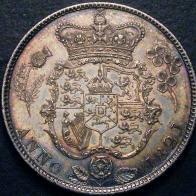


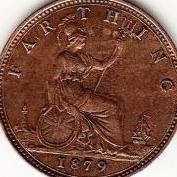
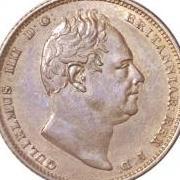


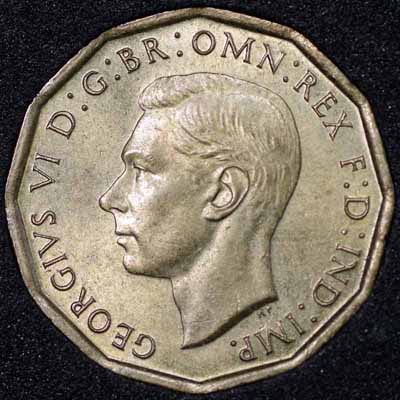
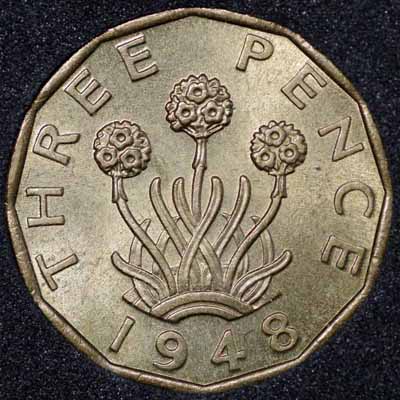


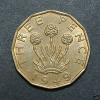


.jpg.ab4c82f91ee2279fb4e1d15e264ce6bb.jpg)
